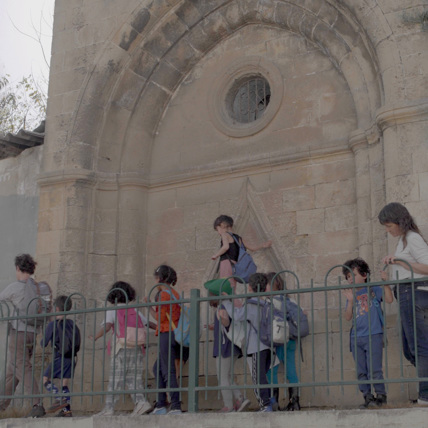Thalia Hoffman | Shapira, البيارة


Thalia Hoffman explores geographical, physical, and historical constructs of the local space through video, performance, and public interventions. Her new video work, “البيارة Shapir,” focuses on the neighborhood that has been her home for over a decade. The work takes on the history of the neighborhood and the attempt to pass it on to her children. “When I first moved to the neighborhood, I was surprised that every plot had a lemon tree,” she says. “After almost a century, it is unlikely that these are trees left over from the orchards that were uprooted in the Nakba, in 1948. And yet, for me, the decision to plant lemon trees in almost every house echoes the expulsion and erasure of Palestinian life in and outside the city since then to this day.”
The work features a children’s guided tour of the neighborhood, which the artist conceived in collaboration with tour guide Anat Groysman, drawing inspiration from a children’s book in Arabic written in 2011 about the memories of a boy who grew up in the orchards of Yafa/Jaffa. The tour follows a series of stops that encourage exploration and play. Its young participants follow in the trail of the old orchards. They are introduced to the Arabic language through a story, words, and a song composed especially for the tour, wandering among citrus trees and abandoned houses, and surveying historical maps.
The work was filmed over one day, and features children who grew up together in a community forest kindergarten in Kiryat Shalom over five years. The closeness and intimacy between the group of kids allow for free movement between listening, playing, and imagination. The result ranges from moments of quiet observation to bursts of energy, creating a rhythm that echoes the tension between past and present, between memory and reality. Combining contemporary documentation with poetic cinematic language allows Hoffman to ask questions about the ways in which knowledge is transmitted to children and how they can not only be exposed to the thorny space in which we live, but also – maybe – imagine a different future in it.

